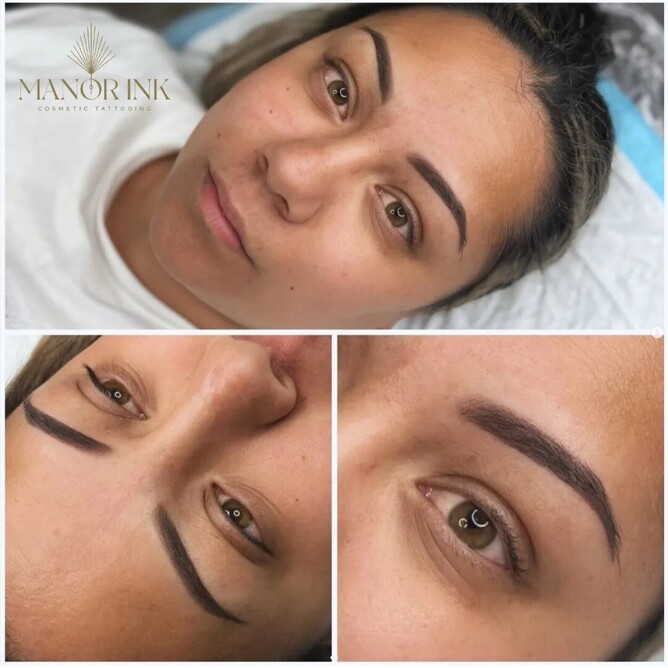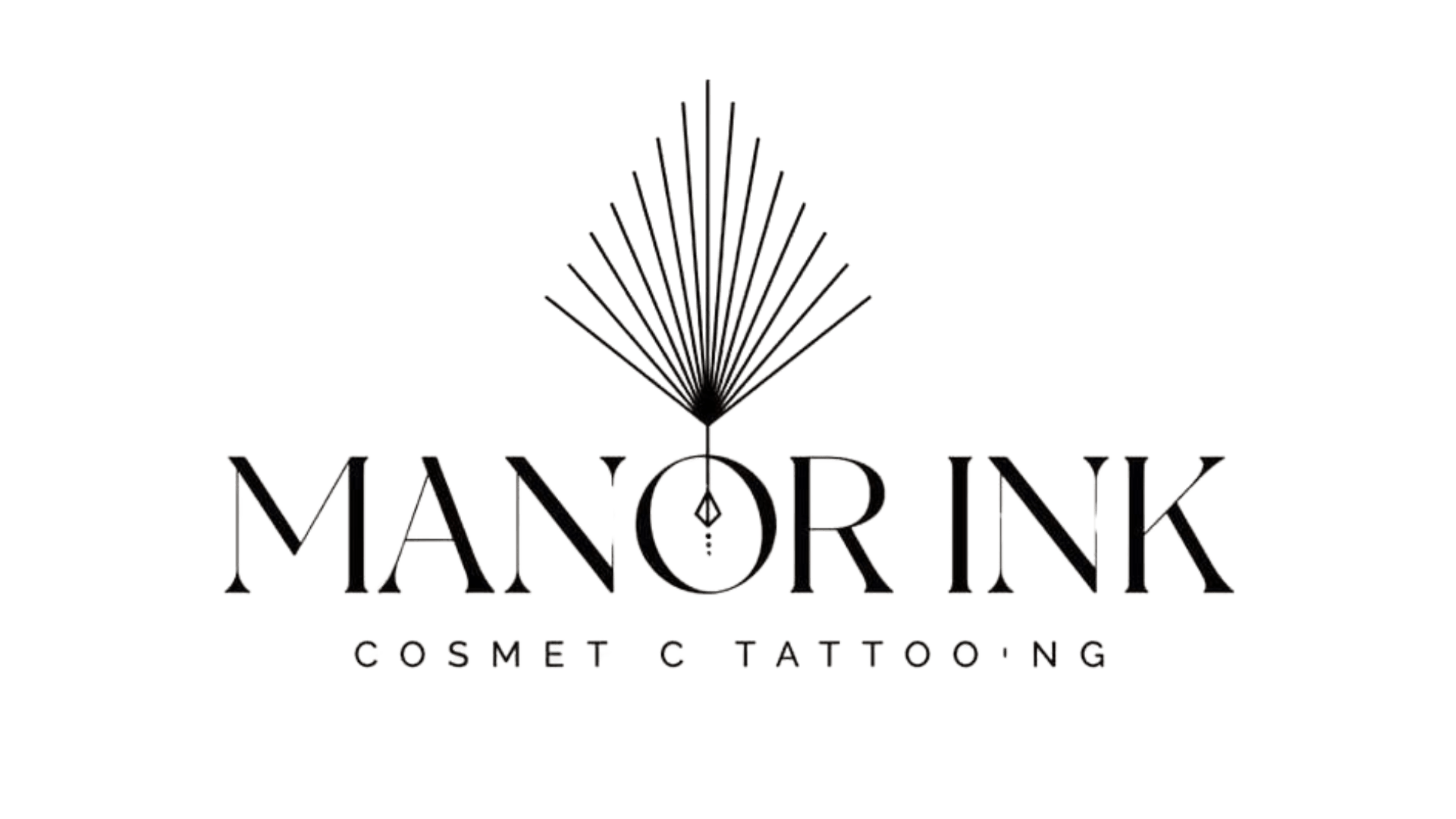Understanding the Healing Process
Healing from a cosmetic tattooing procedure is a unique experience for each person, influenced by factors such as skin type, lifestyle, and adherence to aftercare instructions. Immediately after the procedure, the treated area may appear darker and more intense than the final healed result.
This is a normal part of the process, says Ceylene, from Manor Ink, a permanent makeup artist in Hamilton. The pigment may also seem thicker, and you may experience some redness, swelling, and tenderness. In the first few days, you might notice peeling, itching, flaking, and the formation of small scabs.
These are all natural responses to your body's healing process.Adhering to all aftercare instructions diligently ensures proper healing and pigment retention and empowers you to avoid potential complications.
Remember, each individual's healing journey is unique. While some may experience a swift recovery with minimal flaking, others might undergo a longer or more intense process. Your commitment to following aftercare instructions plays a significant role in this process.
What to Expect During the Healing Journe
During the first week, the pigment might look darker than expected. As the skin heals, it will naturally exfoliate, and the pigment may temporarily appear lighter or even seem to disappear in some areas. However, after the initial healing phase, the colour will gradually reappear and settle into its true shade over the next few weeks.
Brow tattoo clients can typically return to work immediately, while lip tattoo clients should expect some swelling that can last between 24 to 48 hours. This is normal and will subside with time.
The Importance of Aftercare for Long-Lasting Results
Proper care of your new cosmetic tattoo is vital for achieving the best possible outcome. Aftercare not only affects how well your skin retains pigment but also prevents complications such as infection or uneven healing.
Your cosmetic tattoo artist is your guide in this process, providing you with the necessary aftercare instructions and products. Remember, the tattooed area is essentially an open wound in the initial days, so following your artist's advice is key to protecting your investment and making sure of a successful healing process.
For optimal results, follow these step-by-step aftercare guidelines:
Keep the area dry for the first 24 hours. Avoid getting water, sweat, or any moisture on the treated area to allow the initial healing process to begin.
Gently cleanse the area after 24 hours. Use a damp cotton pad or clean cloth with lukewarm water to lightly dab the tattooed area. Avoid rubbing or scrubbing.
Apply a thin layer of recommended healing balm. Use only the aftercare product provided by your cosmetic tattoo artist. Apply a very thin layer to prevent excessive moisture buildup.
Avoid heavy sweating and moisture exposure. For the first week, refrain from activities like swimming, hot showers, saunas, and intense workouts that cause sweating, as moisture can interfere with pigment retention.
Do not pick, scratch, or rub the treated area. Allow any peeling or scabbing to occur naturally. Premature removal of scabs can cause pigment loss, uneven healing, or even scarring.
Limit sun exposure. Direct sunlight can cause premature fading. Wear a hat or keep the area covered, and after healing, apply SPF to protect the pigment.
Avoid makeup and skincare products on the tattooed area. For at least 10 days, do not apply any makeup, lotions, or serums to the healing skin, as these may cause irritation or infection.
Sleep on a clean pillowcase and avoid facial pressure. Try to sleep on your back to prevent disturbing the healing skin with pillow friction.
Attend your follow-up appointment. A touch-up session may be required to perfect the shape and colour after the healing process is complete.
Recognising the Signs of Proper and Improper Healing
Understanding how your cosmetic tattoo should heal is essential for ensuring the best results. While some minor discomfort and changes in appearance are expected, certain symptoms may indicate improper healing or potential infection. Below, we outline the normal signs of healing and red flags that require immediate attention.
Signs of Proper Healing
During the healing process, it's normal for your tattooed area to go through various stages of settling. Some key signs of proper healing include:
Mild Tenderness – The treated area may feel slightly sensitive to the touch for the first few days. This is a natural response as your skin begins to repair itself.
Flaking and Peeling – Light peeling or flaking is a normal part of the healing cycle. Light peeling or flaking occurs as your skin regenerates and the excess pigment naturally sheds.
Temporary Darkening and Lightening – The pigment will initially appear darker and may then lighten as the skin heals. This is a temporary phase, and the true colour will gradually reveal itself over time.
Minimal Swelling and Redness – Some redness and slight swelling are to be expected immediately after the procedure, particularly for lip tattoos. These symptoms should subside within a few days.
Signs of Improper Healing or Infection
While some discomfort is normal, certain symptoms could indicate a problem. If you notice any of the following, take action immediately:
Excessive Swelling and Redness – If swelling and redness persist beyond a few days or worsen, it could be a sign of irritation or infection.
Pus or Oozing Fluid – Any discharge that is yellow or green in colour suggests an infection. If this occurs, seek medical advice immediately.
Intense Pain or Heat – A warm or throbbing sensation that doesn't subside may indicate an underlying issue. If the discomfort increases rather than improves, consult a healthcare professional.
Unusual Discolouration – If the tattooed area turns an unusual shade or develops dark patches beyond the expected healing process, it may suggest an adverse reaction.
Persistent Itching or Rash – Mild itching is normal, but excessive irritation, bumps, or a rash could be a sign of an allergic reaction or infection.
When to Seek Medical Advice
If you experience any severe symptoms, such as fever, persistent pain, or worsening irritation, it's crucial to seek professional medical attention as soon as possible. Additionally, always make sure your hands are clean before touching the treated area, and only use the recommended aftercare products to minimise the risk of complications.
Long-Term Care for Your Cosmetic Tattoo
Even after the initial healing period, your cosmetic tattoo will continue to settle into the skin over the next few months. To prolong the vibrancy of your tattoo, avoid excessive sun exposure, as UV rays can fade pigment over time.
Applying SPF sunscreen over healed brows or lips can significantly extend the longevity of the tattoo. Additionally, maintaining hydration and using gentle skincare products around the treated area will help preserve the results.
Cosmetic tattooing is a semi-permanent procedure, and touch-ups are often required to perfect the final look. Manor Ink recommends booking a follow-up appointment once the healing process is complete to address any areas where the pigment may have faded unevenly.
Trust the Process and Your Artist
We hope this guide has been informative and helpful. Proper healing takes time, and patience is essential. The final results of your cosmetic tattoo will emerge gradually as your skin fully recovers.
By following aftercare instructions closely, avoiding potential irritants, and trusting the process, you will make sure of the best possible outcome. Manor Ink is dedicated to providing expert guidance, ensuring every client achieves beautifully healed, long-lasting results.
Get in touch now to start the process to your permanent makeup journey with a free consultation.




